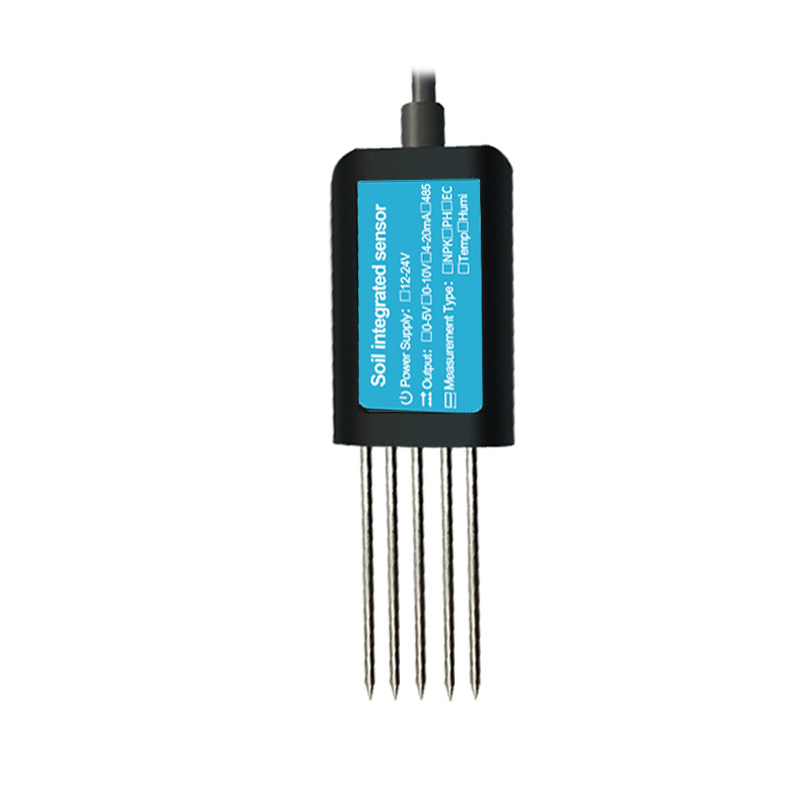Agriculture has been a fundamental part of human civilization for thousands of years, and over time, it has continuously evolved to meet the growing demands of a burgeoning global population. In recent years, technological advancements have revolutionized the agricultural industry, leading to increased efficiency, productivity, and sustainability. One such innovation that has significantly impacted modern agriculture is the development and widespread adoption of soil sensors. These sophisticated devices have transformed crop management practices by providing farmers with real-time data and insights into soil conditions, ultimately leading to more informed decision-making and improved crop yields.

Understanding Soil Sensors
Soil sensors are electronic devices designed to measure and monitor various parameters within the soil, such as moisture levels, temperature, pH, and nutrient content. These sensors can be deployed directly into the soil or installed at the surface, allowing farmers to gather valuable data without the need for manual labor-intensive soil sampling and testing. The information collected by soil sensors is transmitted wirelessly to a central database or a farmer’s smartphone or computer, providing instant access to critical soil health metrics.
The Role of Soil Sensors in Crop Management
Soil sensors play a crucial role in modern crop management practices by enabling farmers to make data-driven decisions that optimize plant growth and maximize yields. By continuously monitoring soil moisture levels, farmers can precisely manage irrigation, ensuring that crops receive the appropriate amount of water at the right time. This not only conserves water resources but also prevents overwatering, which can lead to waterlogging and root diseases. Additionally, soil sensors help farmers implement precision agriculture techniques, such as variable rate irrigation and fertilization, by providing detailed insights into the spatial variability of soil conditions across their fields.
Furthermore
soil sensors contribute to the implementation of sustainable farming practices by minimizing the use of chemical inputs. By accurately measuring soil nutrient levels, farmers can apply fertilizers and other amendments in a targeted manner, reducing waste and environmental impact. This precision agriculture approach not only benefits the environment but also improves the economic viability of farming operations by optimizing input costs.
The Impact of Soil Sensors on Crop Yields and Quality
The integration of soil sensors into crop management has led to tangible improvements in both crop yields and quality. By maintaining optimal soil moisture levels, farmers can mitigate the negative effects of drought stress and water scarcity, leading to healthier and more robust plant growth. Additionally, the ability to precisely manage soil nutrients and pH levels ensures that crops receive essential elements for their development, resulting in improved yield quantity and quality.
Moreover
oil sensors contribute to the early detection of soil-related issues, such as nutrient deficiencies or imbalances, allowing farmers to take corrective actions promptly. This proactive approach to soil management helps prevent yield losses and ensures the overall health and resilience of crops throughout the growing season. As a result, farmers can achieve higher yields and better-quality produce, ultimately benefiting both their bottom line and the consumers who rely on a consistent and nutritious food supply.
Challenges and Future Developments
While soil sensors have proven to be invaluable tools for modern agriculture, several challenges and opportunities for improvement exist. One of the primary challenges is the cost associated with acquiring and deploying soil sensor systems, especially for small-scale and resource-constrained farmers. However, ongoing advancements in sensor technology and increased market competition are driving down costs, making these innovations more accessible to a broader range of agricultural producers.
Furthermore
the integration of soil sensor data with other agricultural technologies, such as precision machinery and unmanned aerial vehicles (UAVs), holds great potential for enhancing the overall efficiency and productivity of farming operations. By leveraging interconnected systems and advanced analytics, farmers can gain a comprehensive understanding of their fields and make well-informed decisions that optimize resource utilization and maximize crop performance.
Looking ahead
the continued development of soil sensor technology is likely to focus on enhancing the accuracy, reliability, and scalability of these devices. Innovations in sensor design, data processing algorithms, and connectivity solutions will further improve the real-time monitoring capabilities of soil sensors, empowering farmers to respond swiftly to changing soil conditions and environmental factors. Additionally, the integration of artificial intelligence (AI) and machine learning algorithms holds promise for analyzing complex soil data sets and providing actionable insights for precision agriculture practices.

Conclusion
In conclusion, soil sensors represent a transformative innovation in agriculture, offering farmers unprecedented visibility into soil health and enabling data-driven crop management strategies. By harnessing the power of soil sensors, farmers can optimize irrigation, fertilization, and overall soil health, leading to improved crop yields, resource efficiency, and environmental sustainability. As technology continues to advance, the integration of soil sensors with other agricultural technologies will further enhance the capabilities of modern farming practices, ushering in a new era of precision agriculture. With ongoing developments and increased accessibility, soil sensors are poised to play a pivotal role in shaping the future of sustainable and productive agriculture.
